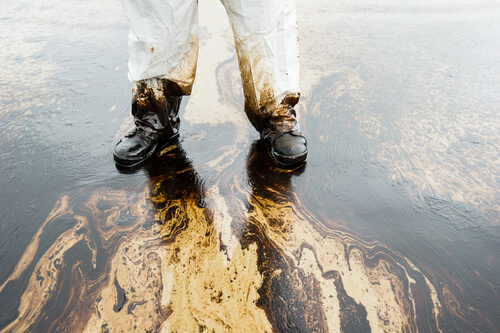Responding to an Environmental Crisis
In environmental emergencies like oil spills, chemical leaks or industrial accidents, the ability to swiftly and effectively respond is crucial. Emergency response services play a vital role in mitigating the impact on ecosystems, communities and public health. But how do they work?
Let’s explore the steps in a rapid and efficient cleanup in crisis situations and some examples of what makes our emergency response services so essential for safeguarding the environment.
Rapid Response
The first step when something goes wrong is the activation of the emergency response team. This involves receiving and verifying the incident information, determining the severity and potential impact and mobilizing necessary personnel, equipment and resources.
Say an oil tanker leaks oil into a waterway: emergency response teams must swiftly mobilize to contain the spill and prevent further contamination. Response teams might deploy booms (temporary floating barriers) and skimmers within hours to contain the spread and minimize the impact on sensitive coastal habitats. But it all starts with activating the team.
Immediate action minimizes the spread and potential harm caused by environmental crises. Delays in response time can exacerbate the damage and make cleanup more challenging.
Assessing the Situation
Upon arriving at the scene, the team conducts an initial assessment. They evaluate the nature of the incident, identify the contaminants involved, assess potential risks to human health and the environment and determine the necessary actions to mitigate the situation.
After a chemical leak at an industrial facility, aside from industrial cleaning, emergency response teams might use air monitoring devices and collect soil samples to determine the extent of contamination and identify the appropriate cleanup methods, all before heading in.
Thoroughly assessing the extent and nature of the contamination is critical to guide cleanup efforts. Emergency response teams employ various other techniques to evaluate the affected area such as water sampling, on-site inspections and drone footage.
Implementing Containment Measures
Containment is crucial for preventing the further spread of contaminants and protecting nearby ecosystems. Emergency response teams have a range of strategies like deploying booms and barriers, or absorbent materials, to confine the pollutants and prevent oil and chemical exposure.
Imagine a pipeline rupture: Emergency responders would swiftly install containment booms along the affected waterway, preventing the oil from reaching sensitive wetlands and ensuring easier cleanup.
Cleanup Techniques and Technologies
Once the contaminants are contained, the focus shifts to the cleanup and removal phase. The response team utilizes appropriate techniques and equipment to remove or remediate the pollutants. This could involve vacuum trucks, specialized cleaning agents, sorbents, or other methods specific to the type of contaminants present.
A hazardous chemical might be accidentally released into a river, leading emergency responders to use activated carbon filters and chemical neutralizers to remove the pollutant, effectively restoring water quality and safeguarding aquatic life.
The response team assesses air and water quality and other environmental parameters to ensure the effectiveness of their containment measures and identify any changes or new risks that may arise.
Safety Considerations
During cleanup, proper disposal of the collected hazardous materials is essential. The response team makes sure to handle and dispose of the waste in accordance with relevant regulations and guidelines.
After the cleanup, decontamination begins to make sure of personnel safety and prevent contaminant spread. This may involve washing equipment, vehicles and protective gear, as well as providing decontamination stations for personnel to undergo thorough cleansing themselves.
Safety is paramount during an emergency cleanup. Personal protective equipment (PPE), air monitoring devices and decontamination procedures are implemented to ensure the well-being of all involved. Personnel undergo rigorous training and adhere to strict safety protocols to protect themselves and the environment.
Finding the Right Provider: TAS Environmental Services
Environmental emergencies often require collaboration among multiple stakeholders. Effective communication and coordination between government agencies, your cleanup service providers and the local community are vital for response and cleanup operations.
In the aftermath of a major chemical spill, for example, emergency response teams work closely with local authorities, environmental agencies and community organizations to coordinate cleanup efforts, share resources and provide timely information to affected residents.
Whatever disaster you’re planning for, TAS Environmental has the expertise and dedication to make sure your site is clean and healthy again. Please contact us today for more information.

